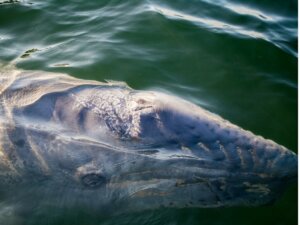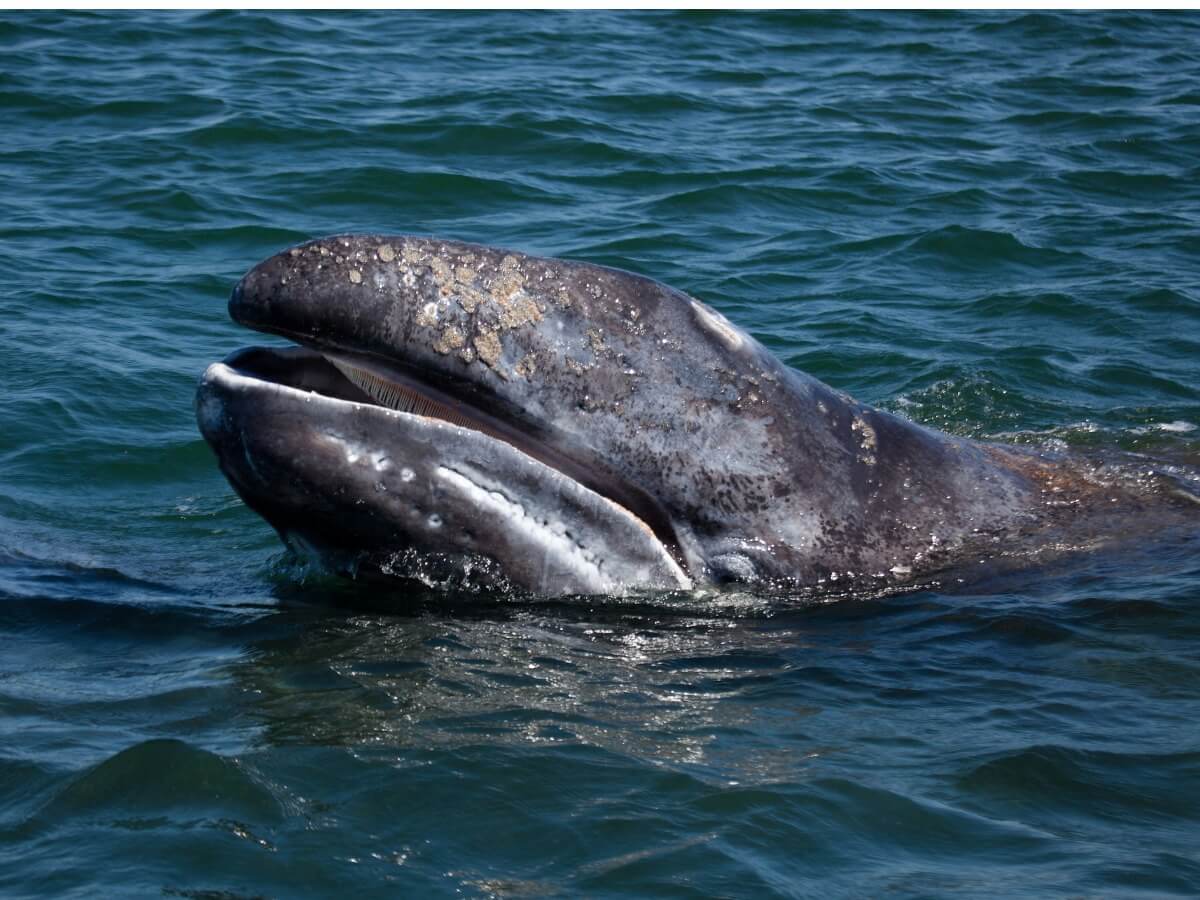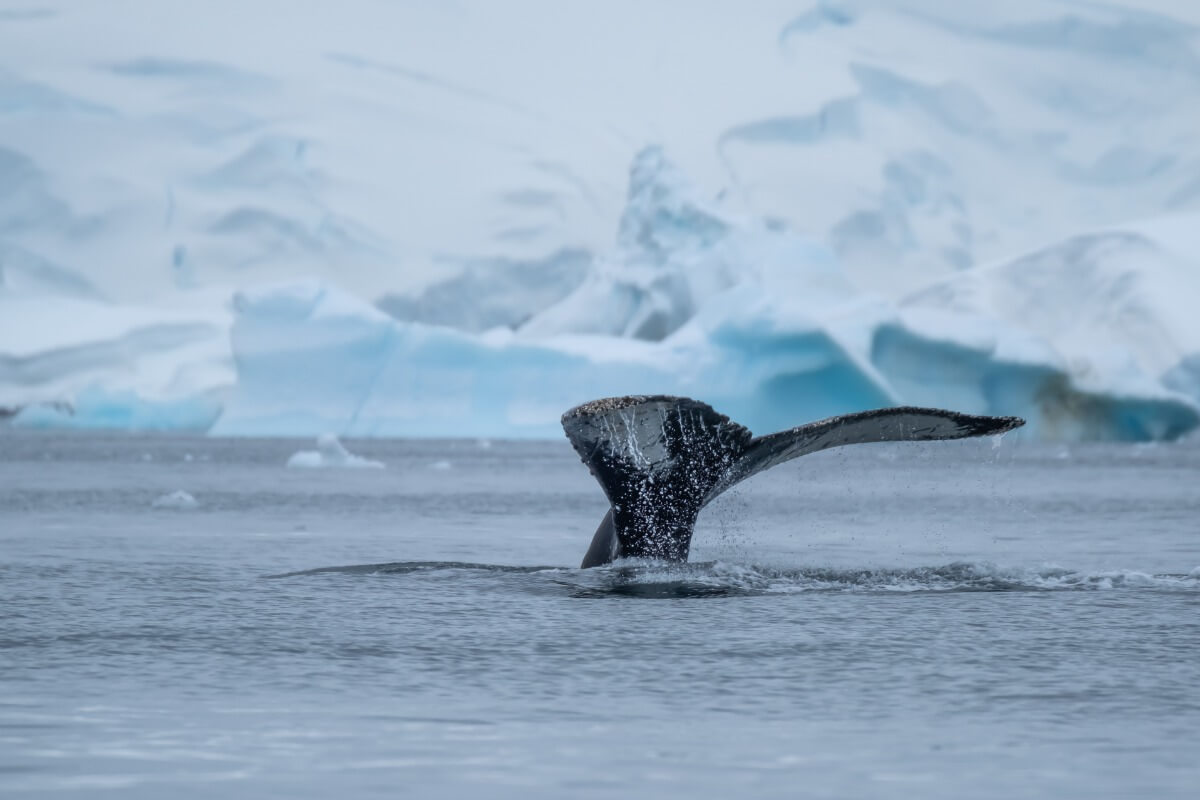Gray Whale Breaks the Record for the Longest Animal Journey!


Written and verified by the biologist Samuel Sanchez
Sometimes nature surprises us with news like this: a gray whale has broken the record for the longest animal journey and has traveled half the world! After its record-breaking trip, the monitored specimen of the Eschrichtius robustus species is, to this day, the wild mammal that has traveled the furthest under the sea since records began.
When receiving news like this, a number of questions spring to mind. Why did it travel so far? Is this natural behavior? Has human intervention had something to do with this feat? In the following lines, we’ll answer these questions and many more. Don’t miss it!
The news
This animal’s feat was picked up by the journal Nature on June 8, 2021. They reported that a gray whale (Eschrichtius robustus) could have traveled almost half of the world (about 20,000 kilometers – over 12400 miles) under the sea in a variable time interval. Let’s have a look at this in more detail.
This male gray whale was first detected in Walvis Bay, Namibia, in 2013. As indicated by the National Geographic portal, this was the first sighting of the species in the southern hemisphere. Despite the fact that the encounter with the specimen occurred several years ago, it has taken a long time to discover that the enigmatic cetacean came from the north of the Pacific.
To discover the origin of the whale, superficial samples of its skin were taken and genetic analyzes were carried out on them. The resulting scientific article, published in the Royal Society, argues that the specimen possibly came from the endangered population of the western North Pacific, which today numbers about 200 specimens.
With the genetic analysis of the cetacean, it was confirmed that it had traveled at least 20,000 kilometers (almost half the world) in a very short period, between May and June 2013. For a species that normally makes trips from 8000 to 11 000 kilometers of travel, this vast displacement has no biological meaning.
The gray whale that made the longest animal journey was first discovered in 2013.

Why did this gray whale make such a long trip?
When the cited study co-author Simon Elwen was informed of the gray whale in Namibia in 2013, he was quite skeptical. In his own words, “it’s as if someone said they’d found a polar bear in Paris. It’s physically possible, but it doesn’t seem very likely.”
At this point, one can only wonder why an animal this large would waste its energy and put its own survival at stake to travel so far. Scientists don’t have any immediate answers to this question. They’ll need to carry out more research into the matter, but they are considering some hypotheses.
In the first place, it can never be ruled out that the animal had been lost or that it had a congenital defect. However, the strongest hypothesis is that the melting of the Arctic could be opening new routes for these cetaceans, allowing them to explore (or lose themselves) in new habitats. Without a doubt, the human being reappears as top of the list of the culprits.
The natural migration of whales and their conservation
Although not much is known about the actual area of gray whale habitat, it is known that they migrate annually between their polar summer feeding grounds and their temperate and tropical calving grounds. The migratory routes of the eastern and western Pacific populations are very different and, unfortunately, there’s very little information on the latter group.
Interestingly, both groups are so different from each other that they could even be considered two different subspecies of gray whales. The eastern population is stable and at minimal risk with more than 20,500 specimens, while the western nucleus has only 200 individuals, which is why it’s considered endangered.
The group of western whales reached an all-time low in 2010, with an estimated 26 breeding females, of which none had been incorporated into the population since 1995. The extremely slow growth rate of these animals makes them prone to disappearance, since one of these cetaceans takes up to 11 years to mature sexually.
Thanks to conservation efforts, western whale population numbers appear to be increasing.

One of the remnants of a species that’s asking for help
The gray whale that made the longest animal journey came from the western population, which remains in danger. If something is clear after examining the case, it’s that, unfortunately, this feat was probably unintentional.
The intervention by humans in the seas of this planet is causing species to disappear. The poles are melting and severe ecosystem disasters are occurring. With all the environmental variations associated with climate change currently occurring, unfortunately, it’ll become increasingly common to see animals outside their natural areas.
Sometimes nature surprises us with news like this: a gray whale has broken the record for the longest animal journey and has traveled half the world! After its record-breaking trip, the monitored specimen of the Eschrichtius robustus species is, to this day, the wild mammal that has traveled the furthest under the sea since records began.
When receiving news like this, a number of questions spring to mind. Why did it travel so far? Is this natural behavior? Has human intervention had something to do with this feat? In the following lines, we’ll answer these questions and many more. Don’t miss it!
The news
This animal’s feat was picked up by the journal Nature on June 8, 2021. They reported that a gray whale (Eschrichtius robustus) could have traveled almost half of the world (about 20,000 kilometers – over 12400 miles) under the sea in a variable time interval. Let’s have a look at this in more detail.
This male gray whale was first detected in Walvis Bay, Namibia, in 2013. As indicated by the National Geographic portal, this was the first sighting of the species in the southern hemisphere. Despite the fact that the encounter with the specimen occurred several years ago, it has taken a long time to discover that the enigmatic cetacean came from the north of the Pacific.
To discover the origin of the whale, superficial samples of its skin were taken and genetic analyzes were carried out on them. The resulting scientific article, published in the Royal Society, argues that the specimen possibly came from the endangered population of the western North Pacific, which today numbers about 200 specimens.
With the genetic analysis of the cetacean, it was confirmed that it had traveled at least 20,000 kilometers (almost half the world) in a very short period, between May and June 2013. For a species that normally makes trips from 8000 to 11 000 kilometers of travel, this vast displacement has no biological meaning.
The gray whale that made the longest animal journey was first discovered in 2013.

Why did this gray whale make such a long trip?
When the cited study co-author Simon Elwen was informed of the gray whale in Namibia in 2013, he was quite skeptical. In his own words, “it’s as if someone said they’d found a polar bear in Paris. It’s physically possible, but it doesn’t seem very likely.”
At this point, one can only wonder why an animal this large would waste its energy and put its own survival at stake to travel so far. Scientists don’t have any immediate answers to this question. They’ll need to carry out more research into the matter, but they are considering some hypotheses.
In the first place, it can never be ruled out that the animal had been lost or that it had a congenital defect. However, the strongest hypothesis is that the melting of the Arctic could be opening new routes for these cetaceans, allowing them to explore (or lose themselves) in new habitats. Without a doubt, the human being reappears as top of the list of the culprits.
The natural migration of whales and their conservation
Although not much is known about the actual area of gray whale habitat, it is known that they migrate annually between their polar summer feeding grounds and their temperate and tropical calving grounds. The migratory routes of the eastern and western Pacific populations are very different and, unfortunately, there’s very little information on the latter group.
Interestingly, both groups are so different from each other that they could even be considered two different subspecies of gray whales. The eastern population is stable and at minimal risk with more than 20,500 specimens, while the western nucleus has only 200 individuals, which is why it’s considered endangered.
The group of western whales reached an all-time low in 2010, with an estimated 26 breeding females, of which none had been incorporated into the population since 1995. The extremely slow growth rate of these animals makes them prone to disappearance, since one of these cetaceans takes up to 11 years to mature sexually.
Thanks to conservation efforts, western whale population numbers appear to be increasing.

One of the remnants of a species that’s asking for help
The gray whale that made the longest animal journey came from the western population, which remains in danger. If something is clear after examining the case, it’s that, unfortunately, this feat was probably unintentional.
The intervention by humans in the seas of this planet is causing species to disappear. The poles are melting and severe ecosystem disasters are occurring. With all the environmental variations associated with climate change currently occurring, unfortunately, it’ll become increasingly common to see animals outside their natural areas.
All cited sources were thoroughly reviewed by our team to ensure their quality, reliability, currency, and validity. The bibliography of this article was considered reliable and of academic or scientific accuracy.
- A grey whale makes an epic swim into the record books, Nature. Recogido a 12 de agosto en https://www.nature.com/articles/d41586-021-01535-5
- A grey whale swam halfway across the world, setting a new record, National Geographic. Recogido a 12 de agosto en https://www.nationalgeographic.co.uk/animals/2021/06/a-grey-whale-swam-halfway-across-the-world-setting-a-new-record
- Hoelzel, A. R., Sarigol, F., Gridley, T., & Elwen, S. H. (2021). Natal origin of Namibian grey whale implies new distance record for in-water migration. Biology Letters, 17(6), 20210136.
This text is provided for informational purposes only and does not replace consultation with a professional. If in doubt, consult your specialist.








